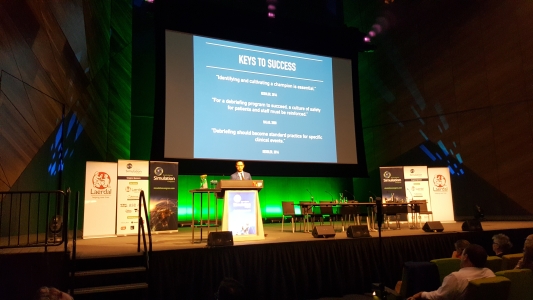21 October 2016
One of the keynote presentations at Simulation Congress this year was by Dr Adam Cheng. Cheng believed that the key driver of effective debriefing is better patient care and outcome. The ideal patient experience can be achieved through debriefing in education and patient care.
Citing the work of Kouzes and Posner, The Leadership Challenge, he argued that effective debriefing requires the application of 5 leadership qualities. Good leaders should possess the following abilities:
1. Modelling the way
2. Inspiring a shared vision
3. Challenging the process
4. Enabling others to act
5. Encouraging the heart
Cheng suggested that these qualities can be exhibited during the debriefing process through the consideration of these 5 factors:
– Timing (When do you carry out the process?)
– Method (For example, PEARLS approach)
– Objectives (Faculty-centred vs learner-centred)
– Co-facilitation (When 2 or more facilitators are involved in the process – opportunity for peer coaching)
– Script (Standardising the process)
One of his key messages during the keynote was that there is no one correct method to carry out debriefing. Instead, the process is dependent on context and situation. He also challenged the idea that debriefing should be faculty-centred. Instead, he proposed that it should be more learner-centred. He posited post-debriefing through peer coaching is essential to improve debriefing skills. Cheng believed that faculty development should include debriefing training. He also shared a resource for learning more about effective debriefing: www.debrief2learn.org
